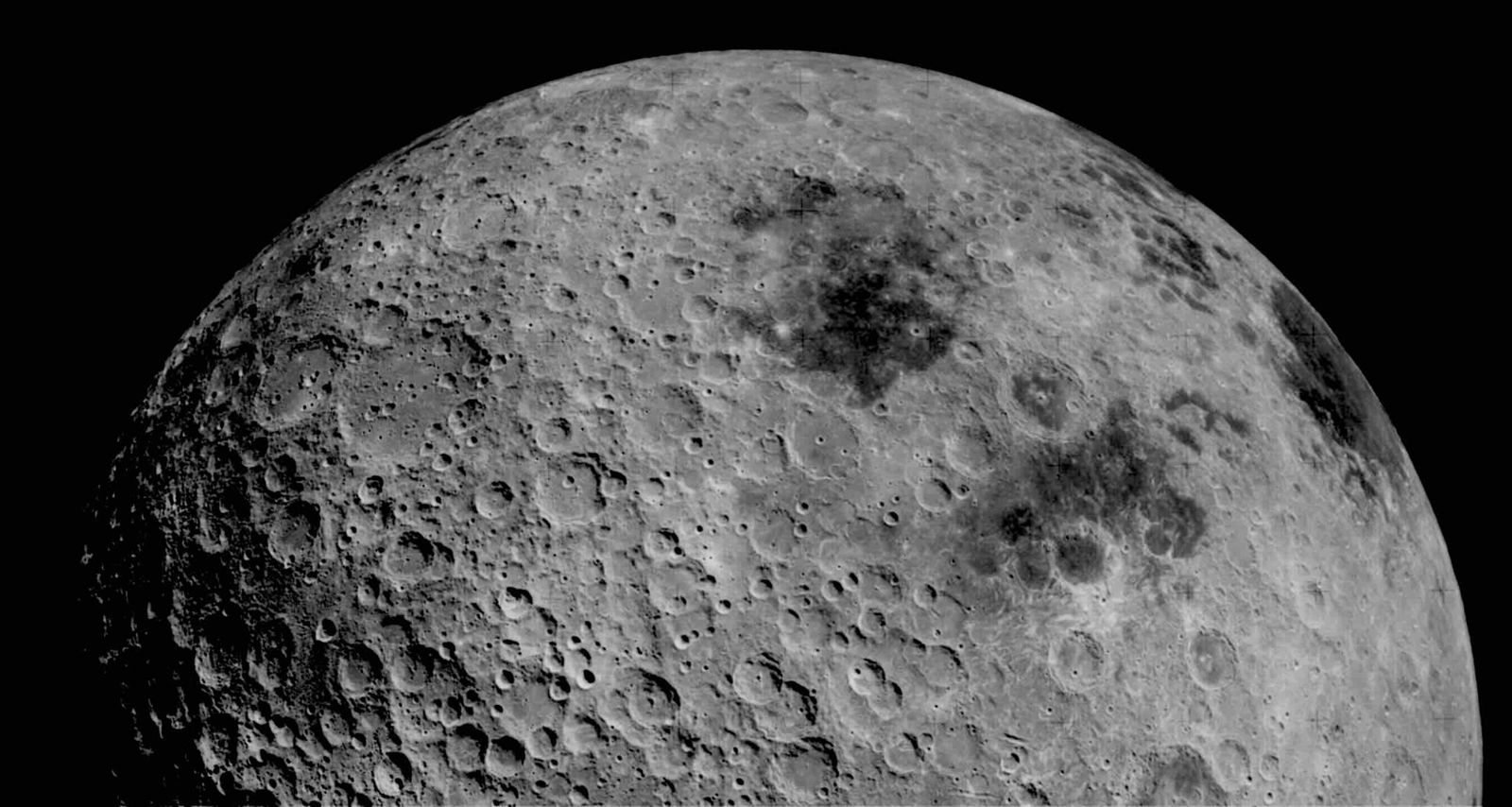University of Hong Kong researchers have identified signs of “hidden magmatism” beneath the surface near the Chang’e-6 lunar landing site on the far side of the Moon, shedding new light on the celestial body’s geologic history.
This discovery could have profound implications for our knowledge of the Moon’s geology, inner workings, and evolution over billions of years.
While the findings have significant scientific potential, the discovery also carries geopolitical implications in the ongoing “space race” between the U.S. and China.
“The results of this research set a significant geological framework to study plutonic rocks in the Chang’e-6 samples, especially Mg-suite rocks,” head of China’s lunar sample studies from the Institute of Geology and Geophysics and study author, Dr. Xianhua Li, said in a statement. “Their petrogenesis and timing are unclear, and this research would dramatically help to understand their origin mechanism.”
Magmatism, a geological process involving the movement and solidification of molten rock (magma) beneath planets’ crusts, plays a crucial role in shaping planetary surfaces. Volcanism is the visible result of magmatism and is the main process responsible for forming mountains.
The Moon was thought to have cooled down significantly since its formation, and it was not expected to exhibit any significant magmatic activity, especially not in areas where the surface appears undisturbed. However, these new findings suggest otherwise.
Describing the analysis of lunar samples taken from the South Pole–Aitken (SPA) basin, researchers wrote, “”We found abundant evidence for the broad distribution of shallow crustal intrusions in SPA, suggesting extensive magmatic activities at depth in SPA.”
This surprising revelation reveals clear signs of magmatic activity in an area once believed to be geologically inactive. The findings could open up a new field of study focused on the Moon’s thermal and magmatic history.
Researchers referred to the process as “hidden magmatism,” or magmatic processes that occur beneath a planetary surface but do not produce obvious surface features such as volcanic craters or lava flows.
Hidden magmatism can occur when magma cools and solidifies deep underground, leaving behind no visible evidence on the surface. On Earth, hidden magmatism is often detected through seismic activity, but on the Moon, where seismic activity is minimal, its discovery requires more indirect methods.
In a study published in the Astrophysical Journal Letters, researchers described how remote sensing data and advanced imaging techniques were used to analyze the Moon’s subsurface near the Chang’e-6 site. By examining variations in the data, scientists could infer the presence of dense material beneath the surface, consistent with magmatic deposits.
The Moon’s surface, heavily scarred by impact craters and meteorites, has long been considered geologically dormant. However, this new evidence suggests that there may still be molten or partially molten rock beneath the surface.
Hidden magmatism on the Moon could result from ancient volcanic activity that never quite reached the surface or indicate more recent internal processes keeping parts of the lunar interior warmer than expected.
These findings expand on earlier research that identified the presence of mysterious magnesium-rich rocks beneath the lunar surface, collectively termed the “Mg-suite.”
Mg-suite rocks, characterized by their high magnesium content and abundant minerals such as spinel and norite, appear to have formed deep within the Moon’s crust. However, the samples collected during NASA’s Apollo missions were discovered in areas far removed from any known volcanic activity.
The mystery deepens because the Mg-suite samples date back to a period of lunar history that suggests they should have originated from significant magmatic processes, but there is no clear evidence of the heat source or geological mechanism that could have created them.
The origin and formation of the Mg-suite samples remain a topic of debate, challenging scientists’ understanding of the Moon’s geological evolution.
In a study published last year in JGR Planets, researchers presented evidence that some of the Mg-suite rocks on the Moon have extrusive volcanic origins.
These recent findings by scientists from the University of Hong Kong further bolster this theory by providing evidence of hidden magmatism deep within the Moon’s surface.
Discovering hidden magmatism on the Moon could significantly affect future lunar exploration missions. If there is still heat or partially molten rock beneath the surface, it could impact NASA and China’s plans to build permanent bases on the Moon’s surface. For instance, geothermal energy could be an alternative to nuclear or solar technologies for powering permanent lunar settlements.
Hidden magmatism could also hold clues about the Moon’s thermal evolution. The presence of subsurface magma suggests that the Moon’s interior could still be more active than previously thought, which could explain certain gravitational anomalies detected by previous lunar missions.
It also raises questions about the sources of this heat. Could it be leftover from the Moon’s early formation, or is there another process at work? This could mean that the Moon’s volcanic history is far richer and more complex than we have imagined.
Finally, these findings present intriguing new questions about our understanding of other celestial bodies. For example, Mars and some of Jupiter’s moons also show evidence of hidden magmatism. Could these processes be more common across the solar system than we realize? The Moon, being the closest celestial body to Earth, could serve as a test case for understanding similar processes elsewhere.
Researchers plan to conduct further investigations using lunar samples and data from other international missions. This collaboration could lead to a more detailed map of the Moon’s interior, highlighting regions where magmatic activity may have occurred or might still be happening.
Ultimately, discovering hidden magmatism opens up a new frontier in planetary science by challenging long-held assumptions about the Moon’s geologic past and providing a model for how we might study other bodies in our solar system. The potential for ongoing magmatic activity also affects how we think about the Moon’s potential resources and suitability for future human habitation.
The recent discovery of hidden magmatism stems from China’s ongoing Chang’e-6 mission, an ambitious lunar exploration program that aims to collect samples from the far side of the Moon. The area chosen for the Chang’e-6 landing site had already intrigued scientists due to its unique geological features.
Aside from the scientific potential, these recent findings also have geopolitical implications, specifically the ongoing “space race” between the United States and China.
Some argue that America’s achievement as the first, and still the only, nation to land humans on the Moon set the stage for its ultimate victory over the Soviet Union in the Cold War two decades later. At the very least, Apollo 11 remains a profound source of national pride.
Similarly, as humanity has turned its sights back towards the Moon, there is ongoing competition between the U.S. and China to achieve the next big scientific or technological breakthrough in space.
At times, there have been veiled threats that the scientific rivalry between the U.S. and Beijing could escalate into a military conflict. On several occasions last year, NASA Administrator Bill Nelson warned that if China were to win the race back to the Moon, it might attempt to claim the resource-rich lunar surface as its sovereign territory.
“It is a fact: we’re in a space race,” said NASA Administrator Bill Nelson in an interview with Politico’s Bryan Bender.” And it is true that we better watch out that they don’t get to a place on the Moon under the guise of scientific research. And it is not beyond the realm of possibility that they say, ‘Keep out, we’re here, this is our territory.'”
Chinese officials reacted to Nelson’s comments by calling his warnings “irresponsible” and “lies.”
“Some U.S. officials have spoken irresponsibly to misrepresent the normal and legitimate space endeavors of China,” Liu Pengyu, spokesperson for the Chinese Embassy in Washington, told Politico. “China firmly rejects such remarks.”
Nevertheless, recent statements from the University of Hong Kong (HKU) reveal that Chinese scientists are acutely aware of the diplomatic and national significance of achieving the next big breakthrough in space exploration.
“This research is an excellent example of HKU’s deep involvement in the China’s Lunar Exploration Program,” Dr. Guochun Zhao, an academician of the Chinese Academy of Science and Chair of Earth Sciences at HKU said. “Lunar and space exploration programs are an important component of China’s goal to become a scientific and technological power, and HKU’s proactive involvement in these programs will bring additional resources for Hong Kong to become an international center for science and innovation.”
Tim McMillan is a retired law enforcement executive, investigative reporter and co-founder of The Debrief. His writing typically focuses on defense, national security, the Intelligence Community and topics related to psychology. You can follow Tim on Twitter: @LtTimMcMillan. Tim can be reached by email: tim@thedebrief.org or through encrypted email: LtTimMcMillan@protonmail.com

